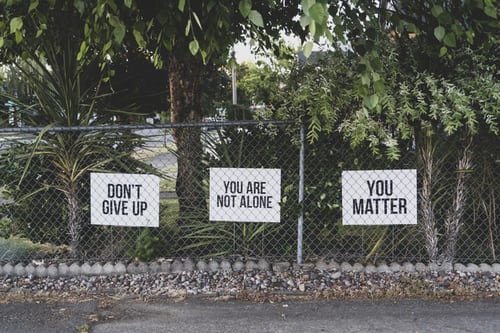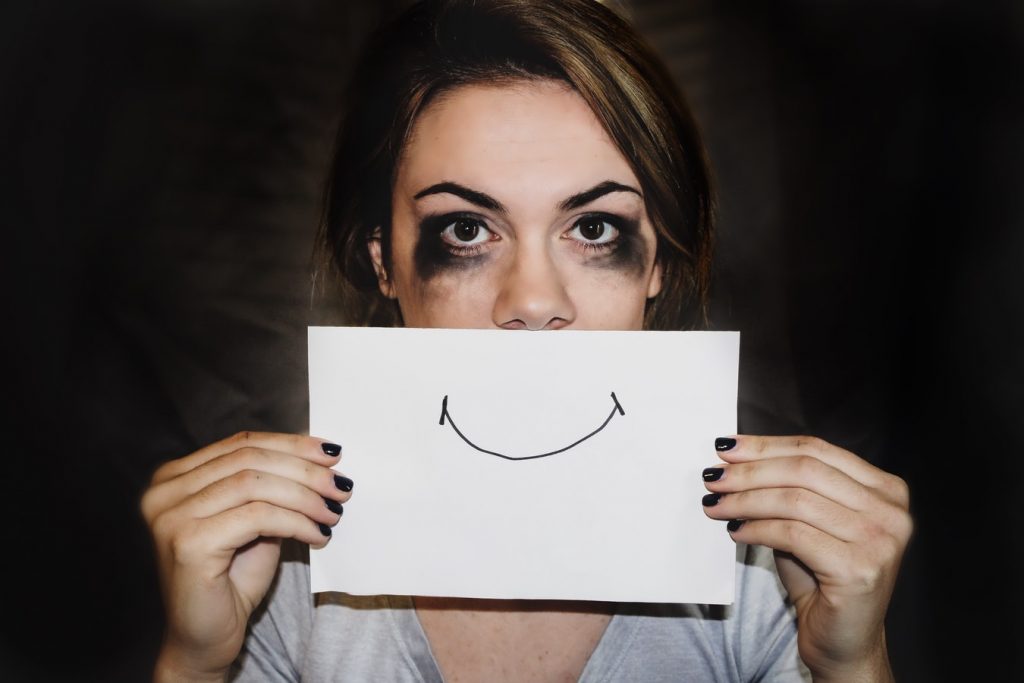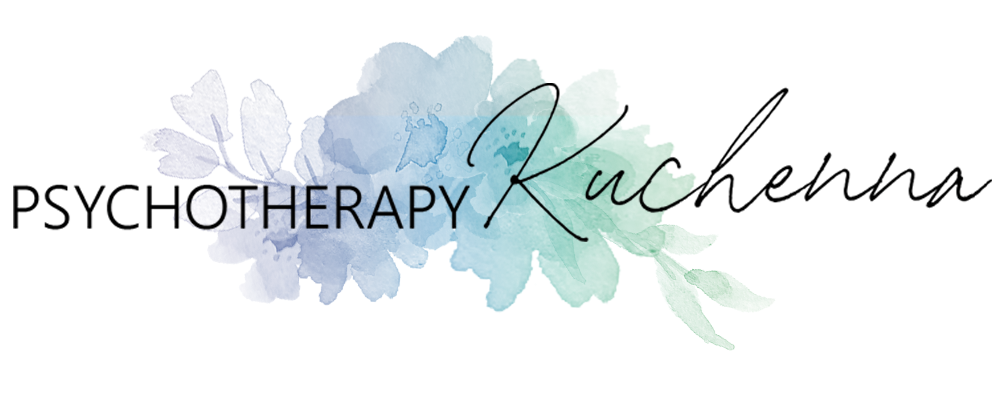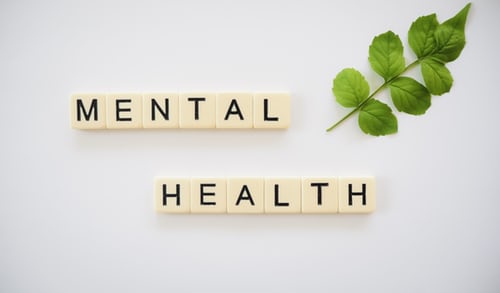Mental health is not a destination, but a process…
The topic of mental health or mental illness raises lots of emotions, evokes lots of contradicting opinions (especially around people within its profession), and there is still some level of stigma attached to it. People usually don’t want to talk about mental health or share it with others. They are usually ashamed and are afraid of other people’s judgment. Many people believe (usually parents) that mental health doesn’t exist or that mental health is a way of getting attention. Many people hide their own self, they hide their emotions, their truth. Mental health is very important, it should be taken as seriously as our physical health. If someone suffers, they suffer for a reason. Everybody is very distinctive, we all have a disparate experience of life. Different aspects of life come together, to help us create who we are today. Our childhood, the relationships, the attachments, our own understanding of the environment we were in, school life, our sexuality, our beliefs, life events, it all plays a huge role in our personality, and in our self- concept. If we don’t feel well, happy, if we find it hard to enjoy any situation, if we don’t feel at peace, it’s worth looking back on our lives to see what was going on and what we went through. Sometimes we dissociate ourselves from our own truth, and we repress our own feelings, because we are too afraid of the emotions and the truth, and we don’t want to feel the pain again.
Mental health- emotional, behavioural, and social maturity or normality; the absence of a mental or behavioural disorder; a state of psychological well-being in which one has achieved a satisfactory integration of one’s instinctual drives acceptable to both oneself and one’s social milieu; an appropriate balance of love, work, and leisure pursuits.
Mental health embraces our emotional, cognitive, behavioral, and social well-being. It manifests itself in self-confidence, self-esteem, self- respect, and self-worth. Our mental condition affects the way we think, feel, and act. It helps us in everyday life to fully enjoy life, overcome difficulties, and make the right choices. Mental health is important at every stage of life from childhood and youth through adulthood to old age. When we are mentally healthy it is easier for us to:
- Create positive and healthy relationships
- Make the most of our potential
- Deal with the challenges of everyday life.
Mental health can affect daily life, relationships, and even physical health. Mental health also includes a person’s ability to enjoy life – to attain a balance between life activities and efforts to achieve psychological resilience. The time from conception through childhood is vital in determining the development of each individual and each future generation. During the first period of life, there is more development in mental, social and physical functioning than in any other period in our lives. Because of the important role of this period, special attention is given in national and international government statements and policies, to promoting quality interventions for early years.
Health is created and lived by people within the settings of their everyday life; where they learn, work, play and love…
Mental health is a very individual and personal subject. It involves the condition of an individual human mind. When talking about a person’s mental health, it is advisable to distinguish between attributes and actions. Mental health is one of many human values; it should not be regarded as the ultimate good in itself. No one completely acceptable, the all-inclusive concept exists for physical health or physical illness, and, likewise, none exists for mental health. A national program against mental illness and mental health does not depend on the acceptance of a definition of mental health. Many scientific investigators have thought about the psychological content of positive mental health. A review of their contributions reveals six major approaches to the subject:
- Attitudes of the individual toward himself.
- The degree to which a person realizes his potentialities through action.
- Unification of function in the individual’s personality.
- Individual’s degree of independence of social influences.
- How the individual sees the world around him.
- Ability to take life as it comes and master it.

Mental health legislation
The aim of mental health legislation is to provide legal requirements for the protection of the basic human rights of people with mental disorders with treatment facilities, personnel, professional training, and service structure. Mental health legislation embraces provisions concerned with the restraint and protection of individual patients, regulation of compulsory admission, discharge procedures, appeals, etc. According to the World Health Organization (WHO), 78% of countries in the world have laws in the field of mental health. More than half of the existing legislation is recent and has been enacted since 1990. However one- fourth of this, were enacted after 2000.
People start to heal, the moment they are heard.
Mental Illness
The term ‘mental health’ is sometimes used to mean an absence of a mental disorder. The most common types of mental illness are anxiety disorders, mood disorders, and schizophrenia disorders.

Anxiety Disorders – are the most common forms of mental illness. The individual has severe fear or anxiety, which is associated with certain objects or situations. Most people with an anxiety disorder will try to avoid exposure to whatever triggers their anxiety. However, examples of anxiety disorders include:
Panic disorder – the person experiences unexpected paralyzing terror or a sense of imminent disaster.
Obsessive-compulsive disorder (OCD) – the person has obsessions and compulsions. In other words, constant stressful thoughts (obsessions), and a powerful urge to perform repetitive acts, such as hand washing (compulsion).
Phobias – these may include simple phobias (a disproportionate fear of objects), social phobias (fear of being subject to the judgment of others), and agoraphobia (dread of situations where getting away or breaking free may be difficult).
Post-traumatic stress disorder (PTSD) – this can occur after somebody has been through a traumatic event – something horrible or frightening that they experienced or witnessed. During this type of event, the person thinks that their life or other people’s lives are in danger. They may feel afraid or feel that they have no control over what is happening.
Mood disorders- also known as affective disorders or depressive disorders. People with these conditions have significant changes in mood. Examples of mood disorders include:
Major depression – the individual is no longer interested in and does not enjoy activities and events that they previously liked. There are extreme or prolonged periods of sadness.
Bipolar disorder – previously known as manic-depressive illness, or manic depression. The person switches from episodes of euphoria (mania) to depression (despair).
Persistent depressive disorder – previously known as dysthymia, this is mild chronic (long term) depression. The patient has similar symptoms to major depression but to a lesser extent.
SAD (seasonal affective disorder) – a type of major depression that is triggered by a lack of daylight. It is most common in countries far from the equator during late autumn, winter, and early spring.
Schizophrenia disorders – Whether or not schizophrenia is a single disorder or a group of linked illnesses has yet to be fully determined. It is a highly complex condition. Schizophrenia normally activates between the ages of 15 and 25. The individual has thoughts that appear fragmented; they also find it hard to process information. However, schizophrenia has negative and positive symptoms. Positive symptoms include delusions, thought disorders, and hallucinations. Negative symptoms include withdrawal, lack of motivation, and a flat or inappropriate mood.
Early signs
It is difficult to tell whether an individual is developing a mental health problem, however, if certain signs appear in a short space of time, maybe it would be worth considering, to seek help. Here are some of the symptoms:
- Withdrawing from people or activities they would normally enjoy.
- Sleeping or eating too much or too little.
- Thinking of harming one’s self or others.
- Using drugs more than normal (including alcohol and nicotine).
- Consistently low energy.
- Displaying uncharacteristic emotions.
- Confusion.
- Feeling as if nothing matters.
- Not being able to complete standard tasks, such as getting to work or cooking a meal.
- Hearing voices.
- Persistent thoughts or memories that reappear regularly
- Delusions.
Treatment
There are numerous ways people with mental health problems might receive treatment. It is important to know that what works for one person may not work for another; this is especially the case with mental health. However, it’s important to note that mental illness should not be regarded as a personal failure. Treatments can include:
Psychotherapy (talking therapies) – this is a psychological approach to treating mental illness.
Medication – although it cannot cure mental disorders, some medications can improve symptoms.
Self-help – including lifestyle changes such as reducing alcohol intake, sleeping more, and eating well.
Bibliography:
Boorse, C. (1976). What a theory of mental health should be. Journal for the Theory of Social Behaviour, 6(1), 61-84.
Clement, S., Schauman, O., Graham, T., Maggioni, F., Evans-Lacko, S., Bezborodovs, N., … & Thornicroft, G. (2015). What is the impact of mental health-related stigma on help-seeking? A systematic review of quantitative and qualitative studies. Psychological medicine, 45(1), 11-27.
Jahoda, M. (1958). Joint commission on mental health and illness monograph series: Vol. 1. Current concepts of positive mental health. Basic Books. https://doi.org/10.1037/11258-000
Jané-Llopis, E., & Barry, M. M. (2005). What makes mental health promotion effective? Promotion & education, 12(2_suppl), 47-54.
Killaspy, H., Harden, C., Holloway, F., & King, M. (2005). What do mental health rehabilitation services do and what are they for? A national survey in England. Journal of mental health, 14(2), 157-165.
Mental health: A state of well-being. (2014, August
2014)
http://www.who.int/features/factfiles/mental_health/en/
Serous mental illness (SMA) among U.S. adults. (2016).
National Institute of Mental Health
https://www.nimh.nih.gov/health/statistics/prevalence/serious-mental-illness-smi-among-us-adults.shtml
World Health Organization. Department of Mental Health, Substance Abuse, World Health Organization, World Health Organization. Department of Mental Health, Substance Abuse. Mental Health, World Health Organization. Mental Health Evidence, & Research Team. (2005). Mental health atlas 2005. World Health Organization.

